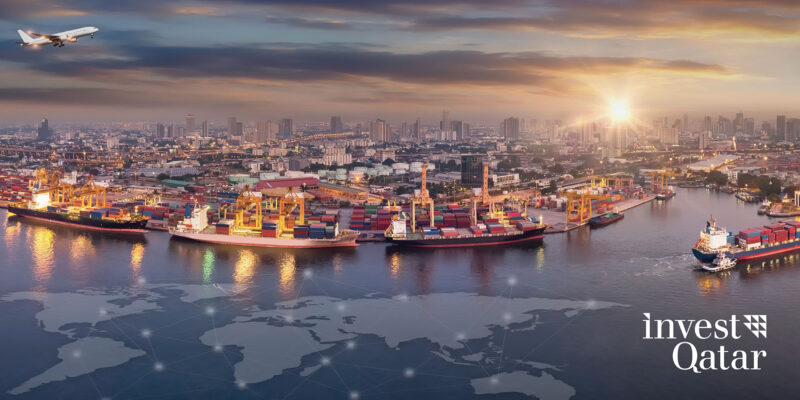Investors stand to benefit from Qatar’s ultramodern infrastructure and its promising ecosystem

Qatar’s Investment Promotion Agency (IPA Qatar) makes the case for making the country a magnet for investment as it emerges as a potential hub as a logistics nerve centre in the GCC and the wider Middle East.
Few events have tested the global logistics and supply chain network as drastically as the Covid-19 pandemic. The aftereffects of the worldwide disruptions will likely be felt for years. At the same time, the crisis brought existing vulnerabilities as well as opportunities to light.
In its midst, a strategically located Gulf state with links to Asia, Europe and Africa has reinforced its role as a reliable logistics hub, recording US$ 22,462mn revenue in logistics and warehousing in 2021.
Excellent connectivity
With 2bn people across more than 25 countries worth US$ 6tn in combined GDP within just 3,000 km reach, Qatar benefits from a unique sense of connectivity. Its national airline, Qatar Airways, connects to more than 150 international destinations, while Hamad Port, the largest multipurpose port in the region, services over 15 direct shipping lanes.
A recent Trading Hub sectoral study by the Investment Promotion Agency Qatar (IPA Qatar) indicates that the country’s logistics market is forecast to outpace all competitors in the GCC region in terms of growth between 2020 and 2026.
Placed against the promising outlook of the global supply chains, logistics and warehousing industry, with a market size of US$ 9.5tn in 2021, investors stand to benefit from Qatar’s ultramodern infrastructure, booming industrial activity, and open approach to business.
Key drivers
The country already ranks in the top 20 per cent in logistics performance globally and second in the Middle East. But what are some of the key drivers of its flourishing trading sector?
Access to capital: Ready and complete industrial facilities for SME owners and entrepreneurs, coupled with low tariffs including for electricity, tax holidays and no customs duties on imports at Qatar Free Zones.
Robust support system: World-class free zones, industrial areas and logistical parks that offer a business-friendly environment and other support services for foreign investors.
Resilient transport & logistics connectivity: Global connectivity through Hamad International Airport (HIA) and Hamad Port with one of the world’s largest air cargo carriers, along with diversified trade partners for critical commodities and goods.
Technological infrastructure: Qatar ranks third in the Arab world on the Network Readiness Index 2021 and continues to work towards innovation. As an example, the Qatar Centre for Artificial Intelligence develops the latest AI tools and tech in the logistics, warehousing, and management space.
For foreign investors, it is a space of untapped potential, not least due to exponential growth in e-commerce and Qatar’s extensive trade and investment treaties, covering over 25 bilateral investment treaties, more than 80 double taxation treaties, and over 20 free trade agreements.
Strategic location
In addition to its strategic location, Qatar has developed advanced logistics systems, tying in world-leading air and sea ports with modern road and warehousing infrastructure. Unsurprisingly, the country’s logistics market experienced a 7 percent uptick in the last five years alone.
Perhaps one of its greatest feats has been the successful integration of the entire trading value chain, seamlessly connecting key players from the import/export side such as Milaha and Maersk, and logistics providers like DHL and DB Schenker with warehousing companies and retailers.
The world continues to search for ever-faster, more sustainable and streamlined ways to transport, store and deliver goods, much of this activity will focus on integrated logistics hubs such as Qatar creating a wealth of opportunities for investors and businesses in Qatar’s supply chain and logistics related sectors.
